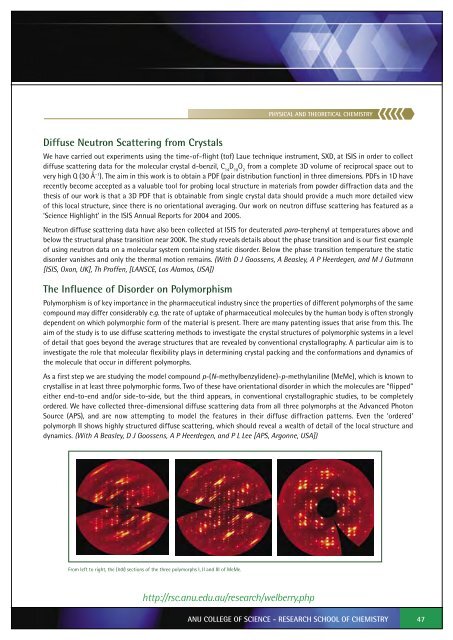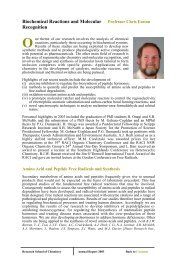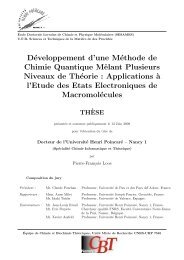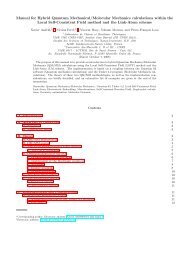View 2005 Report - RSC - Australian National University
View 2005 Report - RSC - Australian National University
View 2005 Report - RSC - Australian National University
Create successful ePaper yourself
Turn your PDF publications into a flip-book with our unique Google optimized e-Paper software.
PHYSICAL AND THEORETICAL CHEMISTRY<br />
Diffuse Neutron Scattering from Crystals<br />
We have carried out experiments using the time-of-flight (tof) Laue technique instrument, SXD, at ISIS in order to collect<br />
diffuse scattering data for the molecular crystal d-benzil, C 14<br />
D 10<br />
O 2<br />
from a complete 3D volume of reciprocal space out to<br />
very high Q (30 Å –1 ). The aim in this work is to obtain a PDF (pair distribution function) in three dimensions. PDFs in 1D have<br />
recently become accepted as a valuable tool for probing local structure in materials from powder diffraction data and the<br />
thesis of our work is that a 3D PDF that is obtainable from single crystal data should provide a much more detailed view<br />
of this local structure, since there is no orientational averaging. Our work on neutron diffuse scattering has featured as a<br />
‘Science Highlight’ in the ISIS Annual <strong>Report</strong>s for 2004 and <strong>2005</strong>.<br />
Neutron diffuse scattering data have also been collected at ISIS for deuterated para-terphenyl at temperatures above and<br />
below the structural phase transition near 200K. The study reveals details about the phase transition and is our first example<br />
of using neutron data on a molecular system containing static disorder. Below the phase transition temperature the static<br />
disorder vanishes and only the thermal motion remains. (With D J Goossens, A Beasley, A P Heerdegen, and M J Gutmann<br />
[ISIS, Oxon, UK], Th Proffen, [LANSCE, Los Alamos, USA])<br />
The Influence of Disorder on Polymorphism<br />
Polymorphism is of key importance in the pharmaceutical industry since the properties of different polymorphs of the same<br />
compound may differ considerably e.g. the rate of uptake of pharmaceutical molecules by the human body is often strongly<br />
dependent on which polymorphic form of the material is present. There are many patenting issues that arise from this. The<br />
aim of the study is to use diffuse scattering methods to investigate the crystal structures of polymorphic systems in a level<br />
of detail that goes beyond the average structures that are revealed by conventional crystallography. A particular aim is to<br />
investigate the role that molecular flexibility plays in determining crystal packing and the conformations and dynamics of<br />
the molecule that occur in different polymorphs.<br />
As a first step we are studying the model compound p-(N-methylbenzylidene)-p-methylaniline (MeMe), which is known to<br />
crystallise in at least three polymorphic forms. Two of these have orientational disorder in which the molecules are “flipped”<br />
either end-to-end and/or side-to-side, but the third appears, in conventional crystallographic studies, to be completely<br />
ordered. We have collected three-dimensional diffuse scattering data from all three polymorphs at the Advanced Photon<br />
Source (APS), and are now attempting to model the features in their diffuse diffraction patterns. Even the ‘ordered’<br />
polymorph II shows highly structured diffuse scattering, which should reveal a wealth of detail of the local structure and<br />
dynamics. (With A Beasley, D J Goossens, A P Heerdegen, and P L Lee [APS, Argonne, USA])<br />
From left to right, the (h0l) sections of the three polymorphs I, II and III of MeMe.<br />
http://rsc.anu.edu.au/research/welberry.php<br />
ANU COLLEGE OF SCIENCE - RESEARCH SCHOOL OF CHEMISTRY<br />
47






